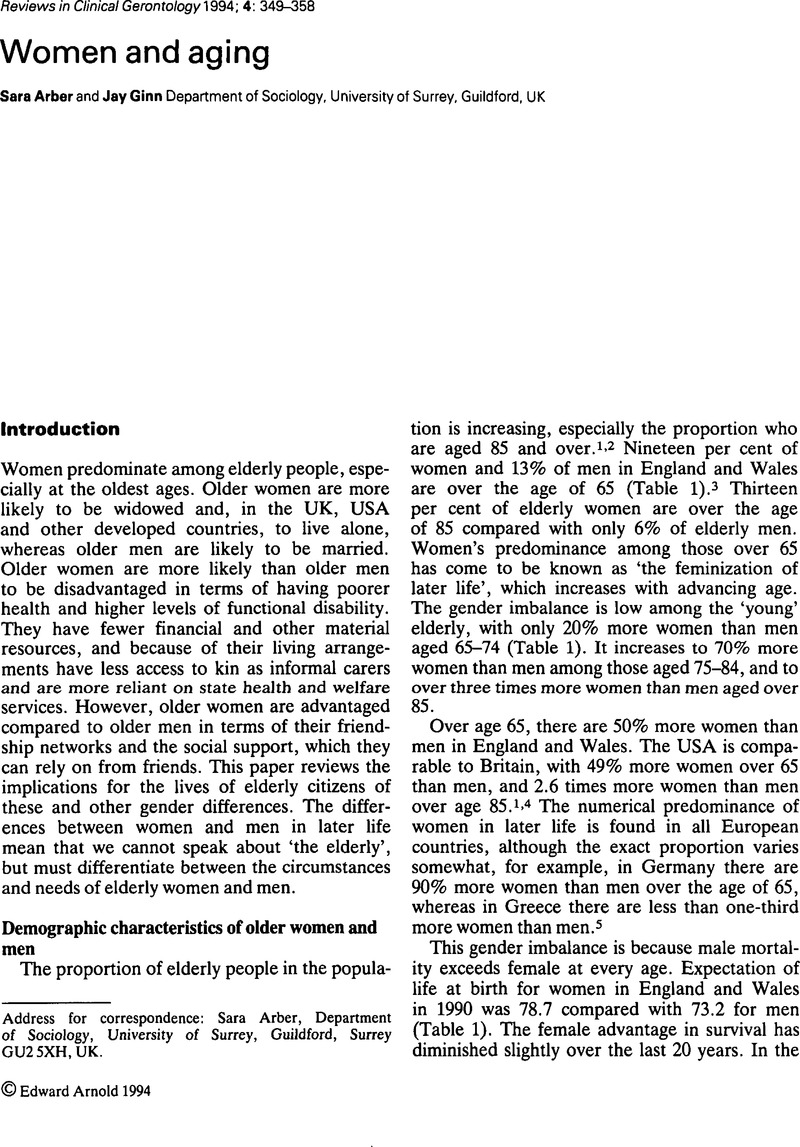Crossref Citations
This article has been cited by the following publications. This list is generated based on data provided by Crossref.
Hollis, Lisa A.
1998.
Sex Comparisons in Life Satisfaction and Psychosocial Adjustment Scores with an Older Adult Sample: Examining the Effect of Sex Role Differences in Older Cohorts.
Journal of Women & Aging,
Vol. 10,
Issue. 3,
p.
59.
Efraimsson, Eva
Sandman, PO
Hydén, Lars‐Christer
and
Rasmussen, Birgit H
2004.
Discharge planning: ‘fooling ourselves?’– patient participation in conferences.
Journal of Clinical Nursing,
Vol. 13,
Issue. 5,
p.
562.
Efraimsson, Eva
Sandman, Per‐Olof
Hydén, Lars‐Christer
and
Holritz Rasmussen, Birgit
2006.
How to get one's voice heard: the problems of the discharge planning conference.
Journal of Advanced Nursing,
Vol. 53,
Issue. 6,
p.
646.
Efraimsson, Eva
Sandman, Per‐Olof
and
Rasmussen, Birgit H.
2006.
‘They were talking about me’– elderly women's experiences of taking part in a discharge planning conference.
Scandinavian Journal of Caring Sciences,
Vol. 20,
Issue. 1,
p.
68.
Kirchengast, Sylvia
and
Haslinger, Beatrix
2008.
Gender differences in health-related quality of life among healthy aged and old-aged austrians: Cross-sectional analysis.
Gender Medicine,
Vol. 5,
Issue. 3,
p.
270.
Radina, M. Elise
Lynch, Annette
Stalp, Marybeth C.
and
Manning, Lydia K.
2008.
“When I Am an Old Woman, I Shall Wear Purple”: Red Hatters Cope with Getting Old.
Journal of Women & Aging,
Vol. 20,
Issue. 1-2,
p.
99.
Luo, Dan
and
Hu, Jie
2011.
Factors Influencing Health-Related Quality of Life Among Minority Elders in Southwest China.
Journal of Community Health Nursing,
Vol. 28,
Issue. 3,
p.
156.
Assari, Shervin
2014.
Cross-country variation in additive effects of socio-economics, health behaviors, and comorbidities on subjective health of patients with diabetes.
Journal of Diabetes & Metabolic Disorders,
Vol. 13,
Issue. 1,
Olivares-Tirado, Pedro
and
Tamiya, Nanako
2014.
Trends and Factors in Japan's Long-Term Care Insurance System.
p.
1.
Moghani Lankarani, Maryam
Shah, Sureel
and
Assari, Shervin
2017.
Gender Differences in Vulnerability to Socioeconomic Status on Self-Rated Health in 15 Countries.
Women's Health Bulletin,
Vol. In press,
Issue. In Press,
BRITTAIN, KATIE
KINGSTON, ANDREW
DAVIES, KAREN
COLLERTON, JOANNA
ROBINSON, LOUISE A.
KIRKWOOD, THOMAS B. L.
BOND, JOHN
and
JAGGER, CAROL
2017.
An investigation into the patterns of loneliness and loss in the oldest old – Newcastle 85+ Study.
Ageing and Society,
Vol. 37,
Issue. 1,
p.
39.
Moghani Lankarani, Maryam
Shah, Sureel
and
Assari, Shervin
2017.
Gender Differences in Vulnerability to Socioeconomic Status on Self-Rated Health in 15 Countries.
Women's Health Bulletin,
Vol. 4,
Issue. 3,
Li, Yunjun
Chen, Honglin
and
Zheng, Hongxia
2017.
Factors associated with loneliness among the institutionalised elders in Shanghai, China: the role of social support.
China Journal of Social Work,
Vol. 10,
Issue. 2-3,
p.
120.
Lee, Ellen E.
Depp, Colin
Palmer, Barton W.
Glorioso, Danielle
Daly, Rebecca
Liu, Jinyuan
Tu, Xin M.
Kim, Ho-Cheol
Tarr, Peri
Yamada, Yasunori
and
Jeste, Dilip V.
2019.
High prevalence and adverse health effects of loneliness in community-dwelling adults across the lifespan: role of wisdom as a protective factor.
International Psychogeriatrics,
Vol. 31,
Issue. 10,
p.
1447.
Li, Yunjun
and
Chen, Honglin
2022.
Gender convergence or divergence in the relationship between late-life depression and multiple stressors: evidence from a national survey in China.
Journal of Women & Aging,
Vol. 34,
Issue. 2,
p.
196.
Jahangir, Selim
and
Sekher, T. V.
2023.
Gender disparities in self-perceived health and subjective well-being among older adults in India: evidences from a large-scale survey.
SN Social Sciences,
Vol. 3,
Issue. 11,



